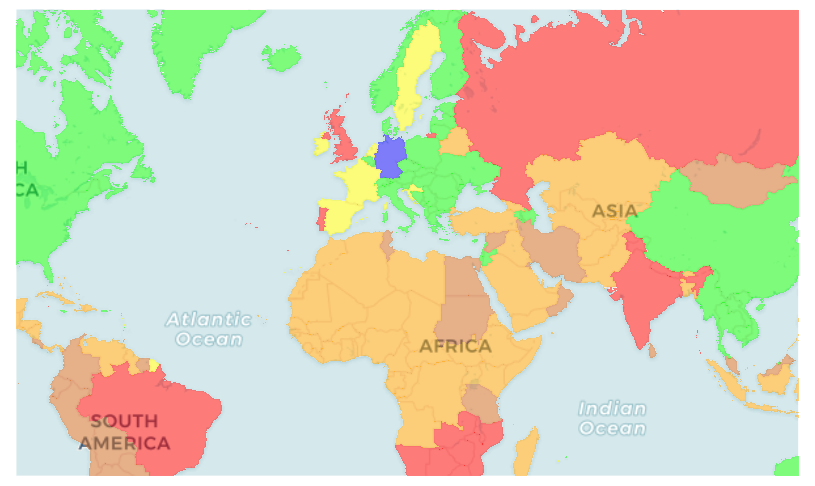I have created a table with dummy risk level codes in case you want to start playing around with the visualization, @dieghernan
https://github.com/dieghernan/RKI-Corona-Atlas/blob/dev/timelapse/mockup.csv
Closed rodrihgh closed 2 years ago
I have created a table with dummy risk level codes in case you want to start playing around with the visualization, @dieghernan
https://github.com/dieghernan/RKI-Corona-Atlas/blob/dev/timelapse/mockup.csv
An initial attempt (really basic, it can be largely improved):

I have just added the actual data in dev/timelapse/risk_date_countries.csv.
Here I have included the risk levels 3 (Risk area) and 4 (Partial risk area, i.e., countries which had some regions under moderate risk and some with no risk).
These were valid from Apr21 to Aug21. After that, the category "risk area" disappeared and the RKI used only"high-risk area" and "virus variant area".
FYI I can produce also mp4 files ;)
A version with transitions:


Very nice! I would suggest swapping the colors for "High risk area" and "Variant of concern", as we also ended up doing in the site:

Would do, also I would add Antarctica even though we don't have data (the world map is just incomplete without it, hurt my eyes)
Another action point to me: Retrieve older versions of the RKI site by scraping together with a wayback machine.
See for instance sangaline/scrapy-wayback-machine@22d525d
Got this so far.
@rodrihgh if we set a method to update https://github.com/dieghernan/RKI-Corona-Atlas/blob/dev/timelapse/risk_date_countries.csv and we deploy it to master branch, the gif can be created automatically using the gh-action

Note that #19 updated the gh-actions, in case you need also to do any modification. It could be a good idea to merge/rebase your branch
It is set now on gif branch, check it

Germany has lifted the travel restrictions for all regions upon the mildness of the omicron variant.
Since this renders the site quite uninteresting, I suggest to collect all the risk levels for each country over time so that some nice visualization can be implemented. This can be broken down into two tasks:
My plan for the table is to have it as a CSV with the following structure: